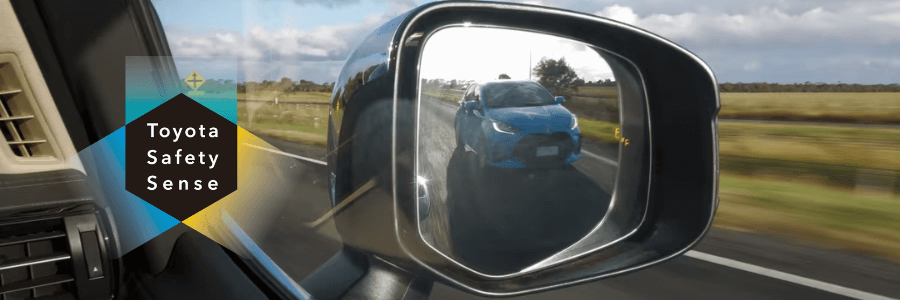Driving with Confidence: The Safety Features of Toyota Vehicles

For families in Northern Canada, all the bells and whistles that come with a quality vehicle don’t mean nearly as much as the safety features. For decades Toyota has put vehicle safety at the forefront of its engineering, with various driver-assist features continuously added to support your awareness on the road. Since the development and introduction of Toyota Safety Sense in 2015, it has been Toyota’s goal to completely eliminate road traffic accidents. Let’s explore Toyota’s safety features a little more in depth.
Toyota Safety Sense
Launched in March 2015 and introduced in 68 countries and regions throughout the globe, Toyota Safety Sense is a suite of intelligent safety systems designed to provide added peace of mind as you drive and keep you, your passengers, and everyone else on the Whitehorse roads with you as safe as possible. This suite of safety features uses a combination of cameras, radar, and lasers mounted in a vehicle’s windshield, front grille, and bumpers to monitor other vehicles, objects, and pedestrians on the road. TSS features can vary depending on the model you choose.
- TSS-P features advanced technologies, including Pre-Collision System, Lane Departure Alert, Dynamic Radar Cruise Control, and Automatic High Beam.
- TSS 2.0 builds on TSS-P and consists of up to six active safety and driver assistance systems.
- TSS 2.5+ adds new capabilities to the Pre-Collision and Dynamic Radar Cruise Control Systems and enhances Lane Tracing Assist.
- TSS 3.0 brings even more advances, including Motorcycle Detection, Lane Change Assist, and Front Cross Traffic Alert.
Driver-Assist Features
Pre-Collision System with Pedestrian Detection
Pre-Collision System with Pedestrian Detection is designed to help detect a vehicle, pedestrian, bicyclist, or motorcyclist and provide an audio/visual forward-collision warning under certain circumstances. If you don’t react, the system is designed to provide automatic emergency braking.
Dynamic Radar Cruise Control
Intended for highway use, Dynamic Radar Cruise Control (DRCC) is an adaptive cruise control system that is designed to be set at speeds above 20 mph and uses vehicle-to-vehicle distance control to help maintain a preset distance from the vehicle ahead of you.
Lane Departure Alert with Steering Assist
When white/yellow lane markings or certain road-edge boundary lines are detected at speeds above 30 mph, Lane Departure Alert with Steering Assist is designed to issue an audio/visual lane departure warning if an inadvertent lane departure is detected. If the driver does not take corrective action, the system is also designed to provide gentle corrective steering for lane-keeping assistance.
Lane Tracing Assist
When Dynamic Radar Cruise Control (DRCC) is enabled and lane markers are detected, Lane Tracing Assist (LTA) uses the lines on the road and/or preceding vehicles to provide active driving assistance and help keep the vehicle centred in its lane. While LTA is activated, the available Emergency Driving Stop System (EDSS) is designed to monitor the driver's inputs, such as steering operation. If the EDSS determines the driver is not attentive and the driver does not respond to prompts to resume control of the vehicle, it can bring the vehicle to a stop under certain conditions.
Road Sign Assist
Using an intelligent camera, Road Sign Assist (RSA) is designed to detect speed limit signs, stop signs, Do Not Enter signs, yield signs and certain warning signs, and display an icon of the sign on the Multi-Information Display (MID).
Automatic High Beams
Automatic High Beams (AHB) are designed to help you see more clearly at night. At speeds above 21 mph, the AHB system is designed to detect the headlights of oncoming vehicles and taillights of preceding vehicles, then automatically toggle between high and low beams accordingly.
Proactive Driving Assist
When system operating conditions are met, using the vehicle’s camera and radar, Proactive Driving Assist (PDA) provides gentle braking into curves or gentle braking and/or steering to help support driving tasks such as distance control between your vehicle and a preceding vehicle, pedestrian or bicyclist.
Experience the difference that smart safety makes by booking a test drive at Whitehorse Toyota today. Once you have TSS on your side, you’ll never want to drive in the Yukon without it. If you have more questions about how Toyota vehicles can be beneficial to your safety, don’t hesitate to reach out and contact us today!